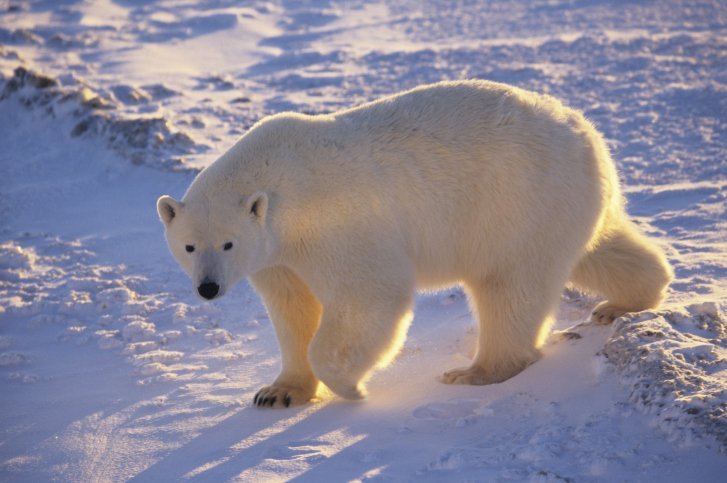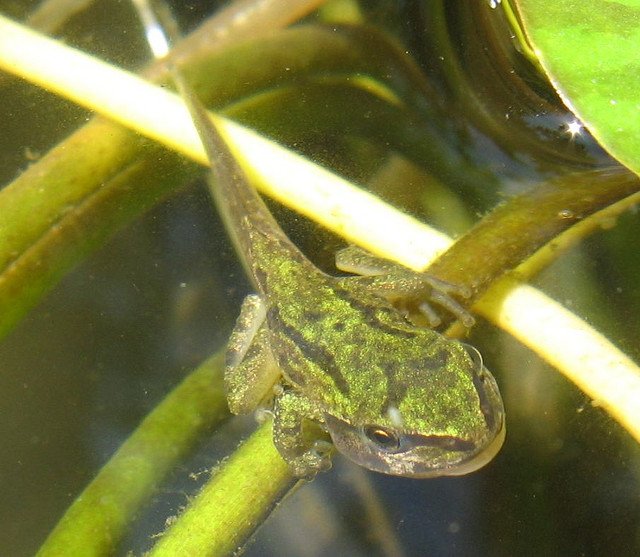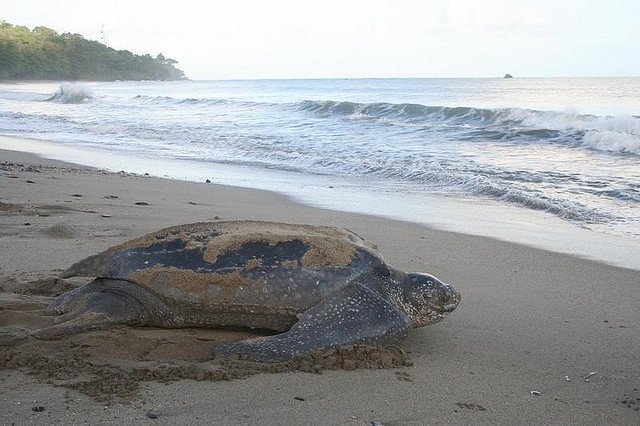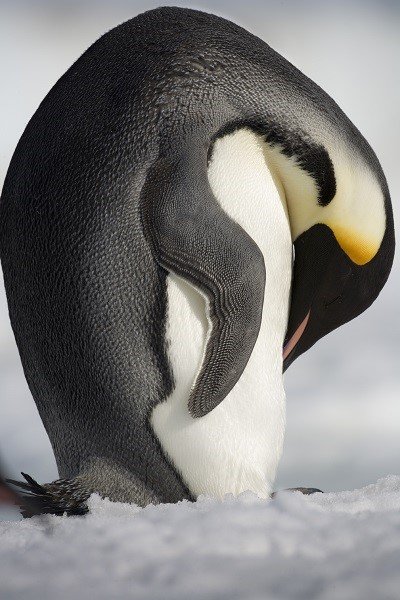Climate change is about more than warmer weather – it’s a big problem pushing some animals towards extinction. Let’s learn more about the different ways climate change affects animals worldwide, and find out how you can help!
Polar bear
With their massive claws and even bigger (and sharper!) teeth, polar bears take the cake for the fiercest-looking hunters. You might be surprised to learn, however, that their hunting style is more laidback than on the attack. These cold-weather carnivores will trek across the ice looking for holes, where they’ll wait patiently for an unknowing seal to pop its head up for air.

As temperatures in the Arctic increase and sea ice keeps disappearing, the polar bear loses the important hunting grounds it needs to survive. Without ice, it takes a lot more energy for polar bears to reach their prey, and this energy is hard to come by during the winter months when food is already limited. If climate change continues, scientists predict that over half of the polar bears in the world could disappear in the next 100 years.
Frogs
If you’ve ever been quick enough to catch a frog, you know their slimy skin feels thin and delicate, but did you know this is because they breathe through their…bodies?? Frogs can absorb oxygen and release carbon dioxide through their skin, which is an important feature for these cold-blooded creatures that spend lots of time underwater and are buried in soil. Unfortunately, their thin skin also leaves them vulnerable to changes in the environment, especially changes in temperature.

Frogs will only lay eggs when the time is just right, and spring’s warm weather usually means there will be enough food around to support their growing tadpoles. But what happens if the weather gets warmer earlier in the year? If frogs lay their eggs early and the food they need isn’t available, it could cause the newly hatched tadpoles to starve.
It’s not only the direct effects of climate change that are causing problems for our frog friends. Warmer weather can cause shallow ponds to dry up, leaving the frogs that would use these ponds to lay their eggs without this important habitat.
Woodland Caribou
Living in the cold Canadian north is tough, but the woodland caribou has it all figured out – and they know that lots of hair is the key to staying warm in the winter! Their bodies are covered in fur, but not just any kind of fur; the caribou’s hair is semi-hollow, which lets it trap warm air close to the caribou’s body to help insulate it and keep it warm. That’s pretty cool!

Sadly for the woodland caribou, this amazing adaptation to surviving the cold is no help in the face of climate change. Caribou spend most of their summers searching for the nutritious food they need to fill up to survive the winter, but warmer weather can melt the snow and ice that the caribou uses to get from place to place to find its food. Higher temperatures can also cause the plants that the caribou needs to survive to grow less and be less nutritious, and eating less healthy food in the summer can make it even harder for the caribou to survive the winter.
Sea turtles
You’ve probably heard that an elephant never forgets, but did you know that sea turtles have a memory that could give them a run for their money? Even though they spend most of their lives cruising the seas, sea turtles will swim back to the same beach they hatched on to lay their eggs – even if this beach is hundreds of kilometers away!

One of the many impacts of climate change is rising sea levels. Just one higher-than-normal tide or a storm that creates big waves at sea can flood turtle nests, suffocating the eggs or washing them away completely.
Penguins
Penguins are easy to spot thanks to their tuxedo-coloured coats and tiny flipper-like wings, but did you know that their characteristic colours are more functional than fashionable? Their black and white feathers might not scream camouflage to you, but they do the trick! The black backs of penguins make them hard to spot from above, and their white bellies look like the reflection of the sun on the water’s surface, helping them avoid predators while still looking like cool customers.

Unfortunately for the penguins that live in Antarctica, the melting sea ice is causing big problems, and even their camouflage can’t help. Penguins travel hundreds of kilometers across the frozen water to get to their breeding grounds, but as the ice melts this journey becomes harder and harder. If females can’t lay eggs in time, fewer new penguins are born, which can shrink colonies over the years.
How can we help?
You can do your part to help slow down climate change by reducing your carbon footprint when you shop. Join our team of Carbon Footprint Investigators today!

Did you know you can lower your carbon footprint by making smarter choices when you shop? Learn more in the Carbon Footprint Investigation Mission in the Earth Rangers App!


Looks good
I just joined, and I already do some of these things
Every day I pick up Garbage
Nice
I shut off all unused lights
I like it because it’s good for learning about the wild
Thank you so much
I just joined
Nice job
That is so cooll